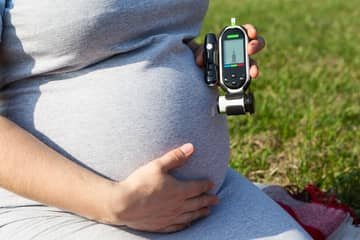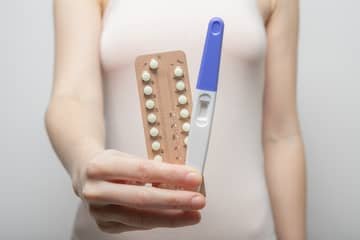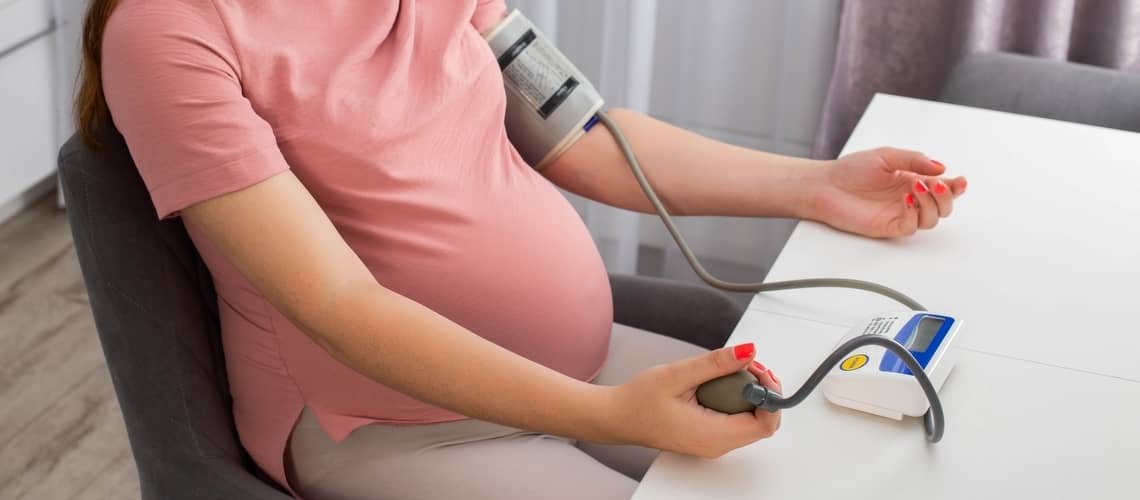
Low pressure in pregnancy. First aid if the pressure is borderline - how to increase low pressure?
Pressure problems during pregnancy are not uncommon. Although high blood pressure (hypertension) is usually talked about in connection with this phenomenon, low blood pressure in pregnancy also represents a kind of complication. Fluctuating pressure is characteristic mainly for the period of the first and second trimester. These are the consequences of hormonal, physical and psychological changes in a woman's organism. At the same time, blood pressure values are influenced by a number of factors. Threshold pressure in pregnancy represents the lower or upper limit. Also, the pressure can fluctuate at different levels. The problem can be low bottom (diastolic) pressure or low top (systolic) pressure. Many mothers-to-be are surprised that they develop low blood pressure during pregnancy, hypertension or pressure fluctuations. What helps with low blood pressure?
Dizziness, nausea, sweating, blurred vision or even fainting? These symptoms can also be a sign of low blood pressure. However, women often attribute these symptoms to morning sickness or attribute them to normal pregnancy symptoms. Nurses therefore measure blood pressure values every time a pregnant woman visits a doctor. It is generally known that a value of 120/80 mmHg is considered the optimal blood pressure. Low pressure is considered values below the 100/60 mmHg limit, and this during repeated measurements. Know that problems with high or low blood pressure can appear during pregnancy even in women who did not indicate any pressure problems until then.
Low pressure in pregnancy - limit values
When does a woman have low blood pressure during pregnancy? The optimal pressure of 120/80 mmHg indicates the ideal value of upper - systolic pressure (120) and lower - diastolic pressure (80). This is a general value, which is also the norm for pregnant women. The pressure is measured using a pressure gauge. Low pressure in pregnancy below 100/60 mmHg means mild hypotension. The value must be confirmed by repeated measurement, as fluctuations in pressure during pregnancy are very common. A measured result below 90/50 mmHg is considered very low pressure during pregnancy and it is necessary to contact a doctor.
Low pressure is technically called hypotension. It is true that the value of low blood pressure during pregnancy has a rather indirect effect on the woman and the fetus. The research and practical experience carried out so far show that low blood pressure values during pregnancy do not have a direct effect on the fetus and its health. Limit values, however, cause discomfort and unpleasant feelings in the mother, which can subsequently have a negative effect on the course of pregnancy.
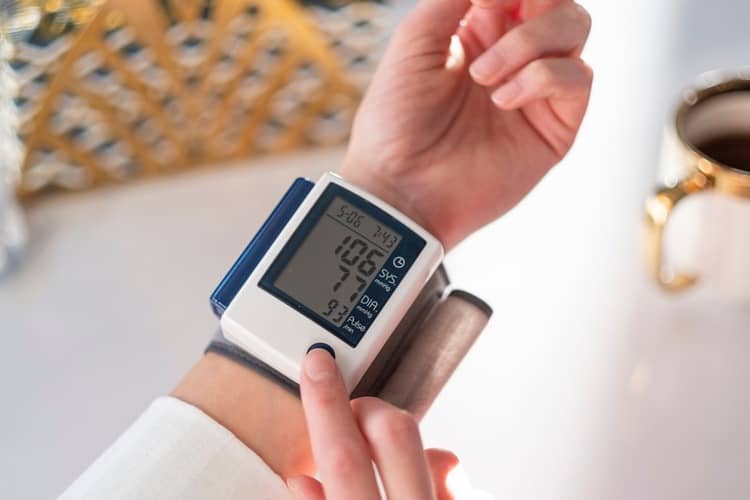
What causes low blood pressure in pregnancy?
There can be many reasons why low blood pressure occurs during pregnancy. The first is primary hypotension - a woman suffers from problems with low blood pressure even before pregnancy. Typically, low blood pressure appears mainly in women with low body weight, anemia or insufficient drinking regime (dehydration). A drop in pressure often occurs because during pregnancy, the mother's body already supplies the fetus with blood through the placenta, which can cause fluctuations in blood pressure values.
Low pressure can also appear as a result of insufficient sleep and rest. In connection with sleep and low blood pressure, the so-called hypotensive syndrome. It manifests itself when a woman sleeps on her back for a long time and the uterus with the fetus presses on the inferior vena cava. Then the blood circulation is affected, which can result in a decrease in blood pressure. This phenomenon appears earlier in the advanced stage of pregnancy (3rd trimester). Hypotension in a woman's body during pregnancy can easily be caused by magnesium deficiency. Very often, a woman feels discomfort when standing up quickly or standing up from a low position, then the brain is insufficiently supplied with blood and reacts late. This can cause dizziness or a typical blackout before the eyes.
Low blood pressure can also be the result of another disease. Alternatively, the pressure may decrease after taking some permitted drugs during pregnancy. Not to mention that the pressure fluctuates even after drinking alcohol, which is strictly forbidden to consume during pregnancy. It can also be a result of infection, heart disease, allergic reaction, anemia, anorexia, thyroid disease or cardiovascular system. For these reasons, we are talking about secondary hypotension.
Low pressure in pregnancy - symptoms
Low blood pressure may not be a serious problem for a pregnant woman until it is accompanied by other symptoms. Based on the available data, low pressure during pregnancy mainly causes significant discomfort with its symptoms. Women may experience some of the following symptoms:
- dizziness and headache,
- nausea,
- dizziness and blackout before the eyes,
- blurred vision
- fainting or loss of consciousness (fainting),
- sweating
- cold skin - especially on the hands and feet,
- fatigue, drowsiness and muscle weakness,
- problems concentrating
- palpitations and rapid pulse,
- tinnitus,
- anxious and panic states.
In some cases, doctors associated low blood pressure with an ectopic pregnancy, but there were also other symptoms. If you have doubts and several symptoms appear at the same time, visit your attending physician. See a doctor also if you suddenly faint, lose consciousness and then become disoriented.
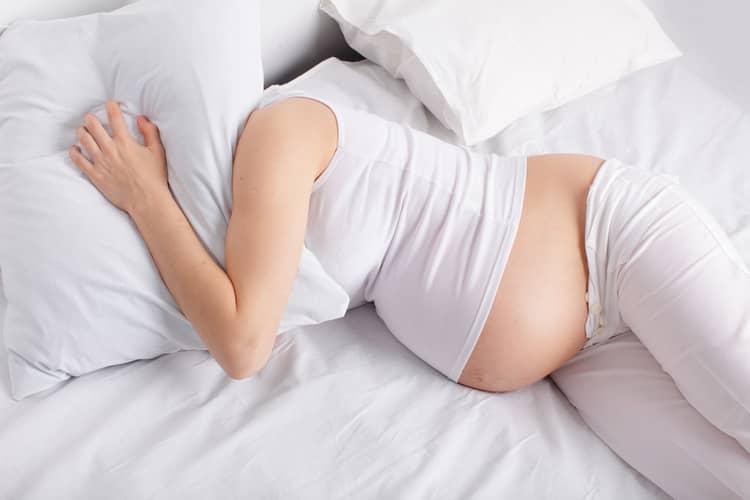
Risks of low blood pressure
Many women experience low blood pressure during pregnancy, while their condition does not require any special treatment. Compared to hypertension, hypotension is a lesser evil in the category of blood pressure problems and does not represent such a high risk.
Research and studies currently show that low blood pressure during pregnancy does not have a direct effect on the health of the fetus and its development. Although some studies have described an association with stillbirth or miscarriage, this risk is not higher than in a normal pregnancy. The highest risk is precisely the consequences of symptoms associated primarily with a possible injury. Darkness before the eyes, dizziness, muscle weakness, dizziness or even fainting can cause a woman to harm herself or her baby as a result of the injury. Even a short loss of concentration and balance can cause a fall, the consequences of which can be fatal in the later stages of pregnancy.
Blood pressure is always monitored by doctors when visiting a woman in the doctor's office. In case of significant problems, the doctor may recommend an EKG examination (disease of the cardiovascular system is ruled out) and blood sampling to monitor blood sugar and hemoglobin levels for the possible occurrence of anemia.
First aid for low blood pressure - treatment
Medicines to increase blood pressure are not recommended for pregnant women and are rarely prescribed by doctors. If low pressure is a chronic problem and the values are low during regular check-ups, it is advisable to set the treatment in agreement with the doctor. Pregnant women often undergo an examination by an internist. The basis is always primarily measures related to the psychological and physical well-being of a woman. Therefore, regime measures are taken, the aim of which is to adjust certain habits of women.
These effective changes in the regime include a sufficient drinking regime. A pregnant woman should drink at least 2.5 to 3 liters of water per day. Not suddenly, but in gradual doses. The first aid for dizziness, dizziness, fainting or fainting is a resting position lying on your back with your legs extended higher, or a position on your side. The goal is to improve blood circulation. If you know you have a problem with low blood pressure, measure it regularly. Get a practical pressure gauge for detailed monitoring.
Appropriate preventive measures include sufficient movement in the form of walking, swimming, yoga, meditation, stretching, pilates or other suitable type of exercise for pregnant women. There are even exercises for low pressure (forward bend, bridge, tilt in Pilates or yoga) that can help with low pressure. However, you should never exercise on an empty stomach. This also includes rest and quality sleep. Insomnia during pregnancy is a common problem for many women. When standing up or after sitting for a long time, a woman should choose slower movements so that the pressure in her body can be balanced. She should avoid strenuous activities. It is necessary to dress comfortably, no tight leggings, stockings or T-shirts.
The body can be supported by increased intake of vitamins and minerals. In the case of hypotension, it is recommended to consult a doctor about the use of dietary supplements. He may recommend increasing the intake of potassium, magnesium, calcium and sodium. As part of the drinking regimen, mineral waters containing these substances are suitable. It is also appropriate to increase the intake of iron (especially in case of anemia), vitamin D and folic acid. Dietary supplements can also include herbal extracts, which help veins and blood vessels and have a positive effect on blood circulation, on the recommendation of a doctor. You also don't need to be afraid to add salt to your food. Salt is rich in sodium.
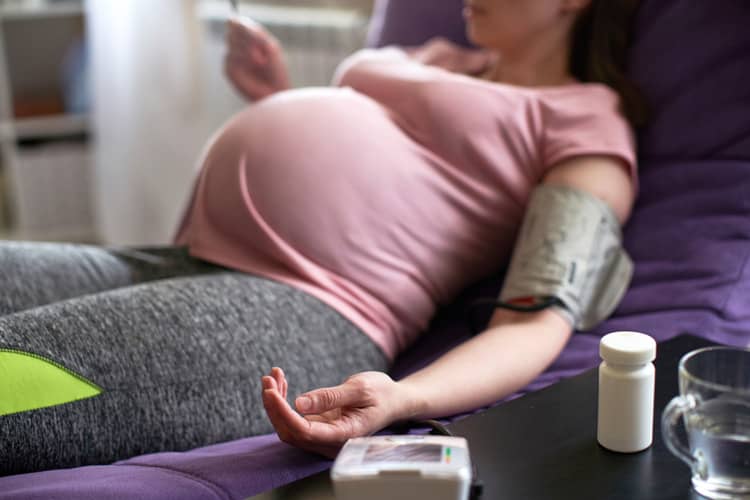
Low pressure in pregnancy - experience
Low blood pressure during pregnancy can trouble many women. However, most of them state that the occasional unpleasant manifestations did not need to be dealt with in any special way. Many women mainly experience great fatigue and nausea. Their lives were made especially uncomfortable by dizziness or heart palpitations. Several discussants point out that especially in the warm summer months, fluctuations in pressure and its decrease are a very common phenomenon. We can include drinking green tea or drinking a small amount of coffee with milk among grandmother's advice for low blood pressure. Women experience the strongest changes in pressure between the 2nd and 6th months. The very contributions of mothers on forums and in discussions prove that low blood pressure during pregnancy is not a rarity, and women usually cope with it by sleeping, resting, sufficient hydration, but also by drinking a small amount of coffee. However, there is no need to overdo it with caffeine during pregnancy.
The most frequent questions - FAQ
Low blood pressure during pregnancy does not pose such a serious threat to the baby, but above all it causes unpleasant conditions in the pregnant woman. Dizziness, dizziness, blurred vision, sweating or a feeling of fainting. Symptoms of low blood pressure during pregnancy represent a greater risk for a pregnant woman due to the potential occurrence of an injury. What helps with low blood pressure? What to do with low blood pressure and does magnesium help with low blood pressure? Do you also have or have you had problems with low blood pressure during pregnancy? Did they measure your blood pressure during pregnancy? We will be glad for your experience. You can share them in the discussion below the article.
What is blood pressure?
What are the symptoms of low blood pressure in pregnancy?
What is low pressure in pregnancy?
How to increase low blood pressure in pregnancy?
What causes low blood pressure?
Pridať komentár

